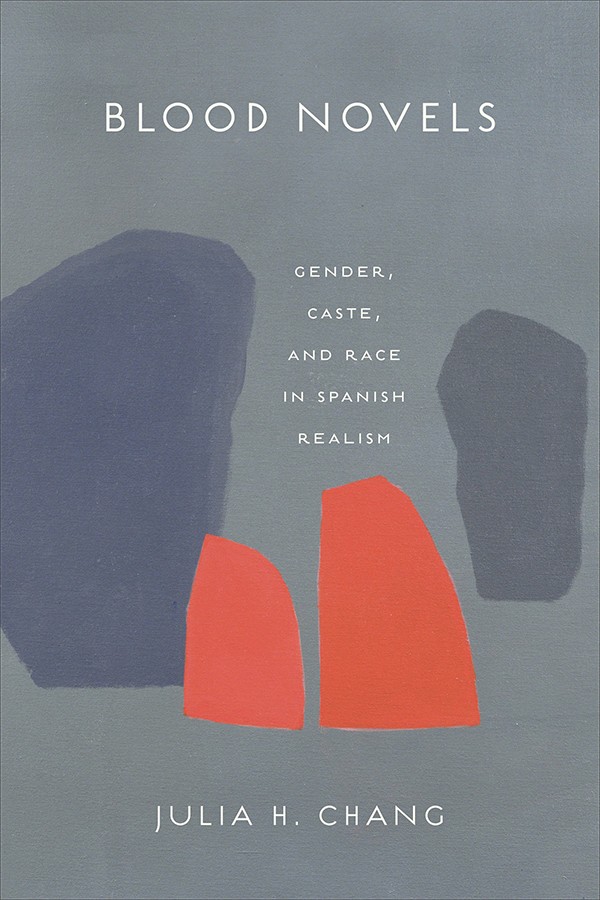‘Blood Novels’ explores material, metaphor in Spanish realist fiction
By Kate Blackwood
Blood plays an important role – as both plot element and metaphor – in novels by Spain’s most prominent writers of the 19th century, according to literary scholar Julia Chang.
“Once I became interested in the question of blood, I started to notice a pattern across these works: Their plots were all structured around beautiful and (initially) chaste women who bore the responsibility of their families’ bloodlines,” said Chang, assistant professor of Hispanic studies in the Department of Romance Studies, College of Arts and Sciences. “And once I became more attuned to the presence of actual, physical blood in these novels, I began to see how material blood was central to the novels’ aesthetic.”
In her new book, “Blood Novels: Gender, Caste, and Race in Spanish Realism,” Chang examines the presence of blood and its deeper literary and cultural meaning in novels by Juan Valera (“Dona Luz,” 1879), Leopoldo Alas (“La Regenta,” 1884-45) and Benito Perez Galdos (“La desheredada,” 1881; and “Fortunata y Jacinta,” 1886-67.)
By treating blood as a conceptual framework through which to view these novels in a new way, Chang said, the book challenges the dominant assumption that blood no longer played a decisive role in social hierarchies in late 19th century Spain.
“Blood Novels” will be the topic of a Chats in the Stacks book talk Oct. 20 at 4 p.m., hosted by Cornell University Library.
The College of Arts and Sciences spoke with Chang about the book.
Question: “Blood Novels” examines four novels by three Spanish authors; why did you choose these works? What do they have in common?
Answer: These are very canonical novels – three out of four of them being emblematic of modern Spanish novel and Spanish realism more broadly. It’s worth noting that two of them (“Fortunata y Jacinta” and “La Regenta”) are both over 1,000 pages long.
Because of the geopolitical position of Spain as not quite European and not quite modern, most scholars of the European novel have never heard of my writers – Galdós, Alas and Valera – while it would be inexcusable for me to have never heard of Dickens, Flaubert, etc.
Question: The concept of blood purity – limpieza de sangre – is important to your analysis. What role did this play in Spanish society in various time periods, and how does it influence the novels you focus on?
Answer: First, it is important to establish that historians and literary scholars have written extensively in the history of limpieza de sangre – a system of discrimination that differentiated between so-called Old Christians who were thought to have pure blood versus Muslim and Jewish converts. Blood purity statues were used to keep conversos out of military orders, professional guilds, and other official offices, but also created a kind of suspicion towards converts in general. My book, in part, argues that the ideology of limpieza de sangre, which is typically associated with the early modern period, drags into the 19th century and becomes a structuring element of the realist novel.
Q: What do your discoveries about blood as both a story element and as a metaphor in these particular works say about the purpose and the power of fiction?
A: Fiction (and the discursive force of representation) on the one hand is very powerful. Blood purity, in essence, is one such powerful fiction. These novels, as works of fiction, are self-reflexive of their own operations, and enfold a kind of longing for a material reality that can’t be subsumed by the fictional worlds they create. So even though limpieza is a very powerful fiction, the material bleeding body has a kind of urgency that exceeds the written word.
Q: What new perspective do you hope to give readers who are familiar with Spanish realist fiction? And what do you hope to convey to readers who have not encountered these books?
A: The expert reader may be shocked by the very concept of blood novels because they have never been framed as such. My hope is that my intervention brings a fresh perspective on these canonical novels that adds complexity to our understanding of Spanish realism in relationship to the history of identity formation (i.e. gender, race and caste). For readers who have not encountered these books, I hope they endeavor to read at least one. “La Deshereadada” (“The Disinherited”) at only about 400 pages is a great place to start.
Kate Blackwood is a writer for the College of Arts and Sciences.
Media Contact
Get Cornell news delivered right to your inbox.
Subscribe

